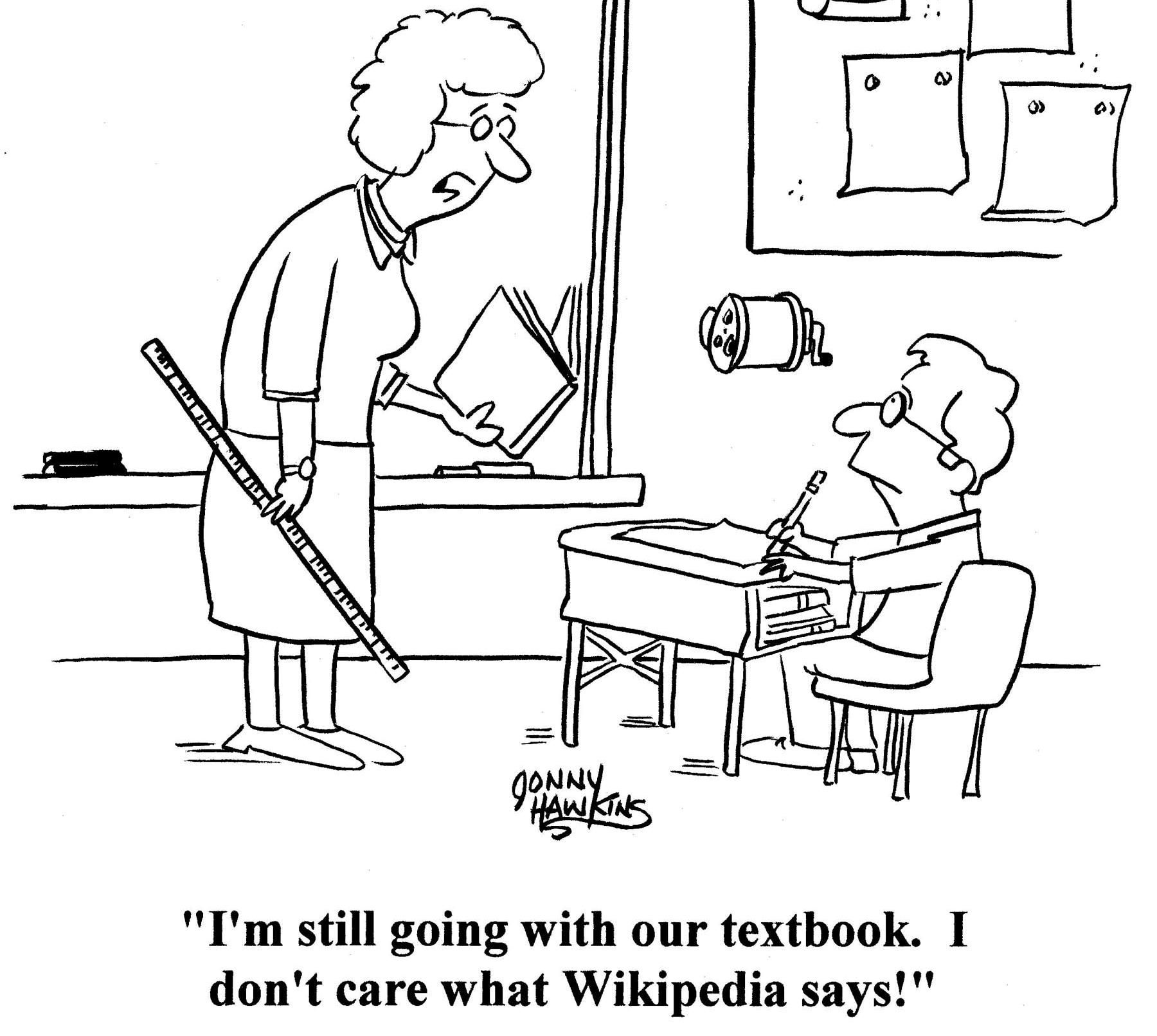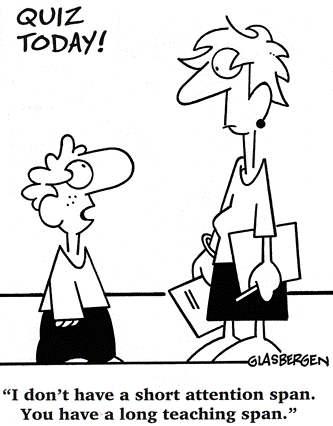
7 Cover Letter Mistakes You Make When Applying Via Email
 {"adCodes": [{"desktop": "\u003cdiv class=\u0027rblad-wit_content\u0027\u003e\u003c/div\u003e", "display": true, "mobile": "\u003cdiv class=\u0027rblad-wit_content\u0027\u003e\u003c/div\u003e", "new_amp": "\u003camp-ad width=336 height=280\n type=\"doubleclick\"\n data-slot=\"/22278042776,22664312254/wit/wit_content\"\n data-multi-size=\"300x250\"\u003e\n\u003c/amp-ad\u003e", "order": 0, "tablet": "\u003cdiv class=\u0027rblad-wit_content\u0027\u003e\u003c/div\u003e"}, {"desktop": "\u003cdiv class=\u0027rblad-wit_content\u0027\u003e\u003c/div\u003e", "display": true, "mobile": "\u003cdiv class=\u0027rblad-wit_content\u0027\u003e\u003c/div\u003e", "new_amp": "\u003camp-ad width=336 height=280\n type=\"doubleclick\"\n data-slot=\"/22278042776,22664312254/wit/wit_content\"\n data-multi-size=\"300x250\"\u003e\n\u003c/amp-ad\u003e", "order": 1, "tablet": "\u003cdiv class=\u0027rblad-wit_content\u0027\u003e\u003c/div\u003e"}, {"desktop": "\u003cdiv class=\u0027rblad-wit_content\u0027\u003e\u003c/div\u003e", "display": true, "mobile": "\u003cdiv class=\u0027rblad-wit_content\u0027\u003e\u003c/div\u003e", "new_amp": "\u003camp-ad width=336 height=280\n type=\"doubleclick\"\n data-slot=\"/22278042776,22664312254/wit/wit_content\"\n data-multi-size=\"300x250\"\u003e\n\u003c/amp-ad\u003e", "order": 2, "tablet": "\u003cdiv class=\u0027rblad-wit_content\u0027\u003e\u003c/div\u003e"}], "adsOrder": [2]}
{"adCodes": [{"desktop": "\u003cdiv class=\u0027rblad-wit_content\u0027\u003e\u003c/div\u003e", "display": true, "mobile": "\u003cdiv class=\u0027rblad-wit_content\u0027\u003e\u003c/div\u003e", "new_amp": "\u003camp-ad width=336 height=280\n type=\"doubleclick\"\n data-slot=\"/22278042776,22664312254/wit/wit_content\"\n data-multi-size=\"300x250\"\u003e\n\u003c/amp-ad\u003e", "order": 0, "tablet": "\u003cdiv class=\u0027rblad-wit_content\u0027\u003e\u003c/div\u003e"}, {"desktop": "\u003cdiv class=\u0027rblad-wit_content\u0027\u003e\u003c/div\u003e", "display": true, "mobile": "\u003cdiv class=\u0027rblad-wit_content\u0027\u003e\u003c/div\u003e", "new_amp": "\u003camp-ad width=336 height=280\n type=\"doubleclick\"\n data-slot=\"/22278042776,22664312254/wit/wit_content\"\n data-multi-size=\"300x250\"\u003e\n\u003c/amp-ad\u003e", "order": 1, "tablet": "\u003cdiv class=\u0027rblad-wit_content\u0027\u003e\u003c/div\u003e"}, {"desktop": "\u003cdiv class=\u0027rblad-wit_content\u0027\u003e\u003c/div\u003e", "display": true, "mobile": "\u003cdiv class=\u0027rblad-wit_content\u0027\u003e\u003c/div\u003e", "new_amp": "\u003camp-ad width=336 height=280\n type=\"doubleclick\"\n data-slot=\"/22278042776,22664312254/wit/wit_content\"\n data-multi-size=\"300x250\"\u003e\n\u003c/amp-ad\u003e", "order": 2, "tablet": "\u003cdiv class=\u0027rblad-wit_content\u0027\u003e\u003c/div\u003e"}], "adsOrder": [2]}
How many times have you applied to a job via email by shooting the employer a copy of your resume and cover letter? I'm going to venture a guess and say at least 20 (but more likely hundreds of times) if you've been searching for any significant length of time.
Here are some of the most notorious cover letter mistakes we've seen when job seekers apply via email and what you can do to greatly improve your chances of being noticed (Make sure you remember these as you write your disruptive cover letter!):
1. Attaching The Cover Letter To The Email
What's wrong with that, you ask? Most hiring managers aren't going to open the cover letter and read it. They'll go straight to the resume instead. Want to ensure your cover letter gets read? Copy and paste it into the body of the email. Whoever received the email will be much more likely to read it if it's already right there in front of their face.
2. Writing Your Whole Life Story In The Body Of The Email
Don't go overboard with details; keep it short. The hiring manager won't be willing to invest a lot of time reading your email. Keep it short and to the point.
3. Providing Information Not Relevant To The Position
Here is a great example:
When I want to bring an additional resume/cover letter writer on staff, I'm not looking for someone with technical writing expertise, article writing skills, or journalism savvy. Those forms of writing aren't relevant to what we do here. I want a writer who has extensive expertise and certification in resume writing. If someone goes on and on in their cover letter (or in the body of the email) about all their other writing experience, they will lose my interest. Instead, I want them to tell me about their most relevant experience as it relates to my needs. I want them to tell me about any resume writing experience they have.
Give the hiring manager a brief overview of the most relevant experience you have, appropriate to the position they are trying to fill. This will pique their interest—rather than lose it.
4. Excluding Information They've Specifically Asked You To Include
Depending on the position, the employer may ask you to submit a sample of your work, portfolio, hours of availability, or even salary requirements. Whatever it is they've asked you to include, make sure you include it in your cover letter. If not, you will most certainly be removed from consideration for failing to follow instructions.
Following instructions and acknowledging everything the employer has asked you to address in the job posting not only saves the employer time but makes you look good. I can tell you this from experience because 9 out of 10 applicants will fail to address every stipulation the employer has listed. It happens to us all the time.
5. Not Using A Cover Letter At All
We've received emails from applicants, and the body of the email provides either little or no information whatsoever. Some simply state, “Here is my resume for your review." You are selling yourself short by not including at least a brief introduction, especially if the employer outlines specific requirements.
Take the time to write, “I see you need someone with availability to work nights and weekends; I would enjoy working these hours and am available to do so." Or, “I have included a sample of my work for your consideration along with my resume. If you have any questions, please do not hesitate to contact me."
6. Forgetting To Tell Them Why You're The Best Fit
Let me tell you about one of THE BEST cover letters I've ever seen: I could tell this person put effort into it—and she took the time to specifically and meticulously review our job requirements. She scrutinized our requirements and detailed in her cover letter how she had experience meeting those needs. It was applicable, relevant, and attention-getting. It was probably one of the only cover letters that actually made us want to read the corresponding resume.
7. Using A Boring Closing Statement
Instead of using the same old boring line, spice it up a bit. One of the more daring cover letter closings I have read closed with, “Call today, don't delay." I applauded her boldness and had to call her. The closing was confident, feisty, and it certainly grabbed my attention. Not to mention the entire cover letter addressed everything she brought to the table as a potential employee and how these elements were relevant to meeting our needs.
What I am trying to get you to see is boring the hiring manager with details not relevant to the job opening—or not making the most of the space and time you're getting—is really to your detriment. Instead, take the time to write something catchy, relevant, and targeted to the position for which you are applying. Sure, it may take a few extra minutes to tweak your cover letter, but in the end, if you get the interview, won't it be worth it?
We know how difficult it is to navigate job search and career challenges like writing an effective cover letter. If you need more help with anything in your career, we're here for you. We'd love it if you joined our FREE community. It’s a private, online platform where workers, just like you, are coming together to learn and grow into powerful Workplace Renegades.
It's time to find work that makes you feel happy, satisfied, and fulfilled. Join our FREE community today to finally become an empowered business-of-one!
This article was originally published at an earlier date.
From Your Site Articles- 3 Tips On What NOT To Do In Your Cover Letter - Work It Daily ›
- Cover Letter Mistakes: 4 Red Flags Employers Watch For - Work It ... ›
- Top 2 Common Cover Letter Mistakes To Avoid - Work It Daily ›
- 5 Crucial Cover Letter Mistakes To Avoid - Work It Daily ›
- How To Successfully Ask For An Interview In A Cover Letter - Work It ... ›
- 7 Easy Tips For Writing A Stand-Out Cover Letter - Work It Daily ›
- 3 Sneaky Cover Letter Mistakes - Work It Daily | Where Careers Go To Grow ›
- 7 Common Cover Letter Mistakes to Avoid - Glassdoor Blog ›
- Tricky Cover Letter Mistakes to Avoid | Monster.com ›
- 8 Common Cover Letter Mistakes To Avoid ›
 {"adCodes": [{"desktop": "\u003cdiv class=\u0027rblad-wit_content\u0027\u003e\u003c/div\u003e", "display": true, "mobile": "\u003cdiv class=\u0027rblad-wit_content\u0027\u003e\u003c/div\u003e", "new_amp": "\u003camp-ad width=336 height=280\n type=\"doubleclick\"\n data-slot=\"/22278042776,22664312254/wit/wit_content\"\n data-multi-size=\"300x250\"\u003e\n\u003c/amp-ad\u003e", "order": 0, "tablet": "\u003cdiv class=\u0027rblad-wit_content\u0027\u003e\u003c/div\u003e"}, {"desktop": "\u003cdiv class=\u0027rblad-wit_content\u0027\u003e\u003c/div\u003e", "display": true, "mobile": "\u003cdiv class=\u0027rblad-wit_content\u0027\u003e\u003c/div\u003e", "new_amp": "\u003camp-ad width=336 height=280\n type=\"doubleclick\"\n data-slot=\"/22278042776,22664312254/wit/wit_content\"\n data-multi-size=\"300x250\"\u003e\n\u003c/amp-ad\u003e", "order": 1, "tablet": "\u003cdiv class=\u0027rblad-wit_content\u0027\u003e\u003c/div\u003e"}, {"desktop": "\u003cdiv class=\u0027rblad-wit_content\u0027\u003e\u003c/div\u003e", "display": true, "mobile": "\u003cdiv class=\u0027rblad-wit_content\u0027\u003e\u003c/div\u003e", "new_amp": "\u003camp-ad width=336 height=280\n type=\"doubleclick\"\n data-slot=\"/22278042776,22664312254/wit/wit_content\"\n data-multi-size=\"300x250\"\u003e\n\u003c/amp-ad\u003e", "order": 2, "tablet": "\u003cdiv class=\u0027rblad-wit_content\u0027\u003e\u003c/div\u003e"}], "adsOrder": [2]}
{"adCodes": [{"desktop": "\u003cdiv class=\u0027rblad-wit_content\u0027\u003e\u003c/div\u003e", "display": true, "mobile": "\u003cdiv class=\u0027rblad-wit_content\u0027\u003e\u003c/div\u003e", "new_amp": "\u003camp-ad width=336 height=280\n type=\"doubleclick\"\n data-slot=\"/22278042776,22664312254/wit/wit_content\"\n data-multi-size=\"300x250\"\u003e\n\u003c/amp-ad\u003e", "order": 0, "tablet": "\u003cdiv class=\u0027rblad-wit_content\u0027\u003e\u003c/div\u003e"}, {"desktop": "\u003cdiv class=\u0027rblad-wit_content\u0027\u003e\u003c/div\u003e", "display": true, "mobile": "\u003cdiv class=\u0027rblad-wit_content\u0027\u003e\u003c/div\u003e", "new_amp": "\u003camp-ad width=336 height=280\n type=\"doubleclick\"\n data-slot=\"/22278042776,22664312254/wit/wit_content\"\n data-multi-size=\"300x250\"\u003e\n\u003c/amp-ad\u003e", "order": 1, "tablet": "\u003cdiv class=\u0027rblad-wit_content\u0027\u003e\u003c/div\u003e"}, {"desktop": "\u003cdiv class=\u0027rblad-wit_content\u0027\u003e\u003c/div\u003e", "display": true, "mobile": "\u003cdiv class=\u0027rblad-wit_content\u0027\u003e\u003c/div\u003e", "new_amp": "\u003camp-ad width=336 height=280\n type=\"doubleclick\"\n data-slot=\"/22278042776,22664312254/wit/wit_content\"\n data-multi-size=\"300x250\"\u003e\n\u003c/amp-ad\u003e", "order": 2, "tablet": "\u003cdiv class=\u0027rblad-wit_content\u0027\u003e\u003c/div\u003e"}], "adsOrder": [2]}
Just the other day, I was driving to a school consulting engagement in New York City when I came upon a car in the middle of the Cross Bronx Expressway engulfed in flames and ready to explode. Without my GPS providing me with an appropriate detour, I could have just as easily ended up in Connecticut. This made me think about how important it is to have a map in teaching.
Here are five tools to help teachers ensure that students are learning despite any curve balls that might be swung their way:
Review Curriculum Scope, Sequence & Pacing Documents
https://squareheadteachers.com/2013/08/30/teacher-memescartoons/
Many textbook series have both curriculum scope and sequence as well as pacing documentation. Review this. A scope and sequence can inform the teacher as to what should be taught when within the year, while a pacing guide can provide the teacher with an idea as to the length of time a particular unit will last and how many lessons are within that unit. Do note, however, that textbook publishers do not know the specific students that any one teacher may have at a given time.
As such, teachers may discover—through student assessment—that some students may have already mastered certain standards or units or may need additional time (lessons) learning other standards and units. Prioritize units of study not yet mastered over units already mastered as well as units of study that significantly influence later standards; this particularly is the case in mathematics and literacy. Do also review what is assessed on state exams.
Administer Mock & Diagnostic Assessments
At the beginning, middle, and end of the year, monitor student achievement and growth on diagnostic assessments, such as through NWEA MAP Growth, as well as on mock assessments that students will be expected to take, for real, at the end of the year. In New York City, for example, K-12 schools are using NWEA while high schools also often administer mock regents exams. This assessment data, particularly concerning areas for continual student growth, can help teachers prioritize certain subject content and skill development in their teaching. By testing throughout the year, teachers also can monitor the impact of teaching strategies on student academic growth and make any necessary pivots to their teaching.
Use A 3-Question Lesson Planning Checklist
Every lesson (within each unit) should answer three key questions. These questions are:
In determining the “it,” select priority standards (the learning units) by reviewing curriculum scope and sequence documents as well as mock and diagnostic assessment data. Then, unwrap those standards into concrete lesson objectives.
Many times, when I observe classes, I see teachers developing lessons that are fun and engaging but that are not necessarily driving towards a specific learning goal or student success criteria. Don’t start instructional planning around question no. 3. Start planning around question no. 1. (the “it”) and then consider the specific assessments (no. 2) and fun engagement strategies (no. 3) that will be used. Contrary to what some teachers may believe, this structure should not kill teacher creativity. Rather, it asks teachers to think first about desired student learning outcomes and then how to be creative in aligning assessments and student activities around this.
Have A 4-Part Lesson Template
https://www.glasbergen.com/education-cartoons/teacher-cartoons-2/
A typical 50-minute lesson should be composed of four parts: introduction (5 minutes), the mini-lecture/guided practice (10 minutes), individual and collaborative student practice time (25 minutes), and summary (5-10 minutes). The learning intention (question no. 1) should be presented in the introduction while the bulk of lesson time should be spent on student practice/exploration (question no. 3). Assessment (question no. 2) can occur in simple ways during the introduction, guided practice, and summary as well as through more formally structured student discussion activities during student practice time.
If teachers are to struggle in using a four-part lesson planning template, it is often in transitioning efficiently from one part of the lesson to the next and in having time for a lesson summary before the end bell rings. I urge teachers to commit to having a ten-minute only guided practice. Remember that teaching does not only occur in front of the classroom during whole group discussion. Teaching also occurs during facilitation as teachers mix and mingle among small student groups and during individual student learning time. Post the timed agenda on the board and use a stopwatch to assist transitions. Any lingering student questions can be answered individually as the teacher facilitates individual and small group learning.
Curate A Bank Of Strategies For Student Assessment & Engagement
In addition to giving formal end-of-unit and year tests, consider having four or five formative assessment strategies that can be used to monitor student progress during every lesson. Popular check on understanding strategies are student turn and talk with a follow-up cold call, signaling, choral response to gauge basic student understanding, and use of planned out small and whole student group discussions to ascertain deeper levels of student cognitive processing.
Student discussion is, of course, also a type of student engagement. There are many protocols for discussion out there depending on the student goal such as for synthesis, cause and effect, and compare and contrast (i.e. differentiation by the process). Also consider how to engage students by providing them with a choice in how they demonstrate their knowledge (i.e. product). Bring in culturally relevant materials that will interest students and on which they already have familiarity (i.e. content). Lastly, don’t forget to vary the learning environment and affect by mixing it up in terms of whole group, small group, and individual instruction as well as by bringing in digital learning.
As an education consultant passionate about helping students achieve and grow, I can help teachers manage workload stress and improve student learning outcomes. I have supported hundreds of educators in improving their curriculum, instruction, and assessment practices by modeling strategies for working smarter rather than harder. Please feel free to reach out to me at John Schembari, Ed.D. | LinkedIn.
Read more Show less {"customDimensions": {"1":"Executive Community, John Schembari","2":"education","3":"teachers, educators, teaching, planning tools, planning tools for teachers, education, teacher, ~rmsc:rebelmouse-image:29584883, ~rmsc:rebelmouse-image:29584791, ~rmsc:rebelmouse-image:29585024, ~rmsc:rebelmouse-image:29585001, ~rmsc:rebelmouse-image:29584819, ~rmsc:rebelmouse-image:29585000","4":"03/23/2022"}, "post": {"split_testing": {}, "providerId": 0, "sections": [0, 544398569, 473333499, 544324100, 479660731], "buckets": [], "authors": [21030904, 24929127]} } Featured 5 Planning Tools For Mastering The Curve Balls Of Teaching
{"customDimensions": {"1":"Executive Community, John Schembari","2":"education","3":"teachers, educators, teaching, planning tools, planning tools for teachers, education, teacher, ~rmsc:rebelmouse-image:29584883, ~rmsc:rebelmouse-image:29584791, ~rmsc:rebelmouse-image:29585024, ~rmsc:rebelmouse-image:29585001, ~rmsc:rebelmouse-image:29584819, ~rmsc:rebelmouse-image:29585000","4":"03/23/2022"}, "post": {"split_testing": {}, "providerId": 0, "sections": [0, 544398569, 473333499, 544324100, 479660731], "buckets": [], "authors": [21030904, 24929127]} }
5 Planning Tools For Mastering The Curve Balls Of Teaching
{"customDimensions": {"1":"Executive Community, John Schembari","2":"education","3":"teachers, educators, teaching, planning tools, planning tools for teachers, education, teacher, ~rmsc:rebelmouse-image:29584883, ~rmsc:rebelmouse-image:29584791, ~rmsc:rebelmouse-image:29585024, ~rmsc:rebelmouse-image:29585001, ~rmsc:rebelmouse-image:29584819, ~rmsc:rebelmouse-image:29585000","4":"03/23/2022"}, "post": {"split_testing": {}, "providerId": 0, "sections": [0, 544398569, 473333499, 544324100, 479660731], "buckets": [], "authors": [21030904, 24929127]} }
 Now Hiring: Remote SysOps Engineer
{"customDimensions": {"1":"Work It Daily, Kinsta \u00ae","2":"popular","3":"kinsta, hiring, remote jobs, remote work, remote workforce, remote companies hiring, remote companies 2021, sysops engineer, sysops engineer jobs, ~popular_source-pageview","4":"05/18/2021"}, "post": {"split_testing": {}, "providerId": 0, "sections": [370480899, 545998439, 545998440, 376489962, 473333499, 526353713, 545658354, 548352055, 548352058, 543270555, 473310812, 473310813], "buckets": [], "authors": [19548593, 21891195]} }
Now Hiring: Remote SysOps Engineer
{"customDimensions": {"1":"Work It Daily, Kinsta \u00ae","2":"popular","3":"kinsta, hiring, remote jobs, remote work, remote workforce, remote companies hiring, remote companies 2021, sysops engineer, sysops engineer jobs, ~popular_source-pageview","4":"05/18/2021"}, "post": {"split_testing": {}, "providerId": 0, "sections": [370480899, 545998439, 545998440, 376489962, 473333499, 526353713, 545658354, 548352055, 548352058, 543270555, 473310812, 473310813], "buckets": [], "authors": [19548593, 21891195]} }
 3 Important Career Lessons Learned On And Off The Field
{"customDimensions": {"1":"Executive Community, J.T. O'Donnell","2":"popular","3":"career change, entrepreneur, entrepreneurship, career, career challenges, overcoming career challenges, personal branding, personal development, professional development, professional growth, success, career success, pro athletes, tom brady, chris gronkowski, nfl, tiktok, social media strategy, social media, career growth","4":"02/10/2021"}, "post": {"split_testing": {}, "providerId": 0, "sections": [0, 370480899, 479660731, 376489962, 526353713, 376489624, 473333499], "buckets": [], "authors": [21030904, 19549412]} }
3 Important Career Lessons Learned On And Off The Field
{"customDimensions": {"1":"Executive Community, J.T. O'Donnell","2":"popular","3":"career change, entrepreneur, entrepreneurship, career, career challenges, overcoming career challenges, personal branding, personal development, professional development, professional growth, success, career success, pro athletes, tom brady, chris gronkowski, nfl, tiktok, social media strategy, social media, career growth","4":"02/10/2021"}, "post": {"split_testing": {}, "providerId": 0, "sections": [0, 370480899, 479660731, 376489962, 526353713, 376489624, 473333499], "buckets": [], "authors": [21030904, 19549412]} }
 How Ex-NFL Player, Chris Gronkowski, Is Using Social Media To Change Careers
{"customDimensions": {"1":"Executive Community, J.T. O'Donnell","2":"popular","3":"2010, Barstool, camera phone, career growth and development, career growth opportunities, chrisgronkowski, cowboys, dallascowboys, dinner, football, free, gronkspike, iceshaker, investor, nfl, nflfootball, nflplayer, nflplayers, nflworkout, payday, rookie, salary, sharing, sharktank, tic toc, tic tok, tick tock, ticktock, tictok, tik tok, tiktok, tiktok.com, trade, trainingcamp, upload, video, video phone, weighin, youtube.com, ~popular_source-pageview, \u0442\u0438\u043a \u0442\u043e\u043a, \u30c6\u30a3\u30c3\u30af\u30c8\u30c3\u30af, chris gronkowski","4":"01/29/2021"}, "post": {"split_testing": {}, "providerId": 0, "sections": [0, 370480899, 473333499, 526353713, 376489624, 479660731], "buckets": [], "authors": [21030904, 19549412]} }
How Ex-NFL Player, Chris Gronkowski, Is Using Social Media To Change Careers
{"customDimensions": {"1":"Executive Community, J.T. O'Donnell","2":"popular","3":"2010, Barstool, camera phone, career growth and development, career growth opportunities, chrisgronkowski, cowboys, dallascowboys, dinner, football, free, gronkspike, iceshaker, investor, nfl, nflfootball, nflplayer, nflplayers, nflworkout, payday, rookie, salary, sharing, sharktank, tic toc, tic tok, tick tock, ticktock, tictok, tik tok, tiktok, tiktok.com, trade, trainingcamp, upload, video, video phone, weighin, youtube.com, ~popular_source-pageview, \u0442\u0438\u043a \u0442\u043e\u043a, \u30c6\u30a3\u30c3\u30af\u30c8\u30c3\u30af, chris gronkowski","4":"01/29/2021"}, "post": {"split_testing": {}, "providerId": 0, "sections": [0, 370480899, 473333499, 526353713, 376489624, 479660731], "buckets": [], "authors": [21030904, 19549412]} }
PropertySea is the ultimate platform for all your real estate needs. Whether you're searching for your dream home, looking to sell or rent your property, or seeking investment opportunities, PropertySea is your one-stop destination.
Whether you're a homebuyer, seller, renter, or investor, PropertySea is your trusted partner in the real estate market. Discover a world of possibilities, connect with expert agents, and make your property dreams a reality. Start your real estate journey with PropertySea today and experience the convenience, efficiency, and reliability of our comprehensive platform.
Originally posted on: https://www.workitdaily.com/cover-letter-mistakes-email